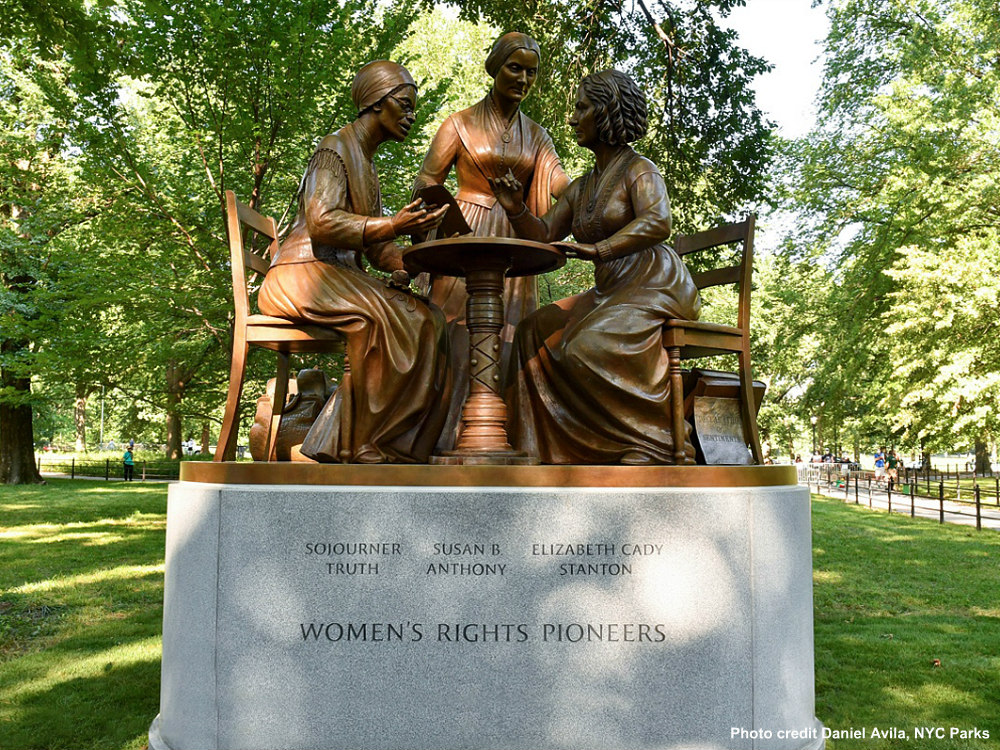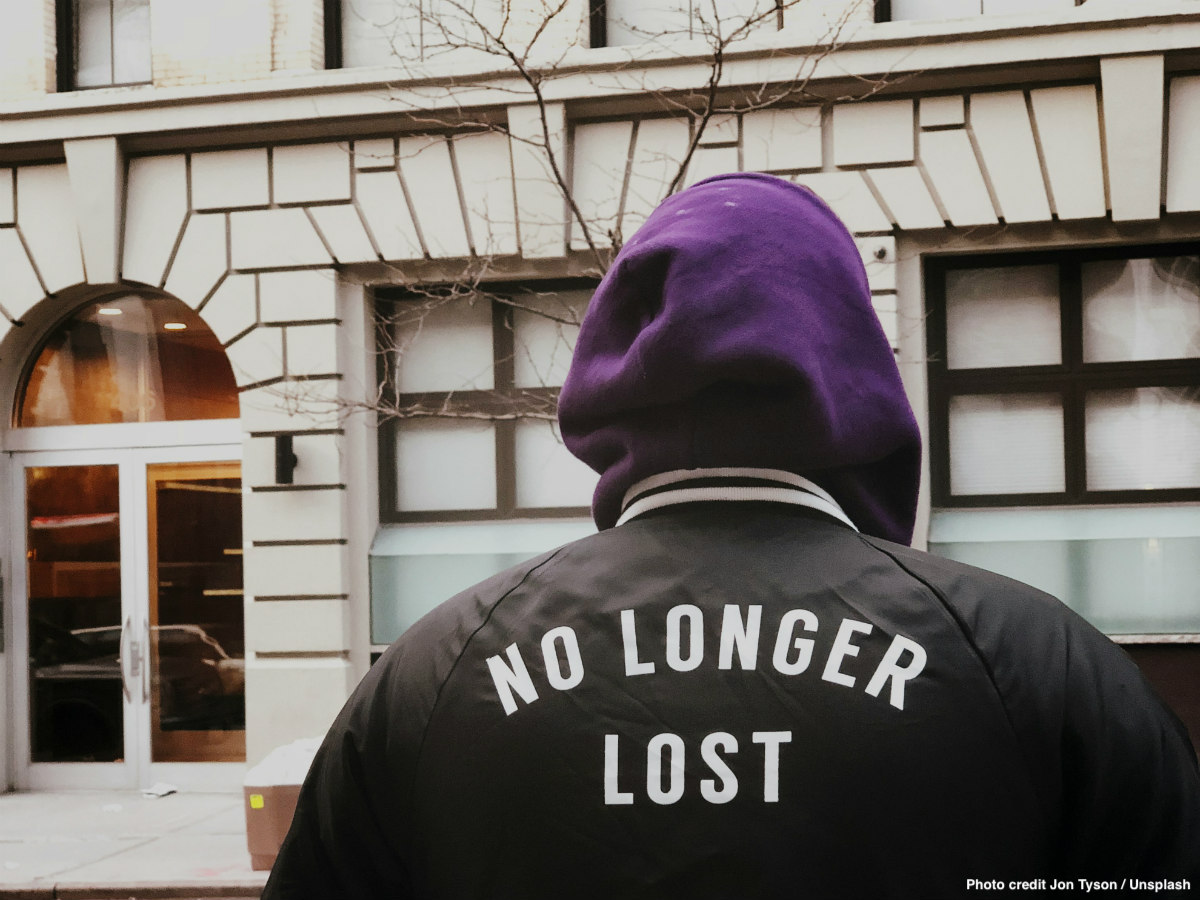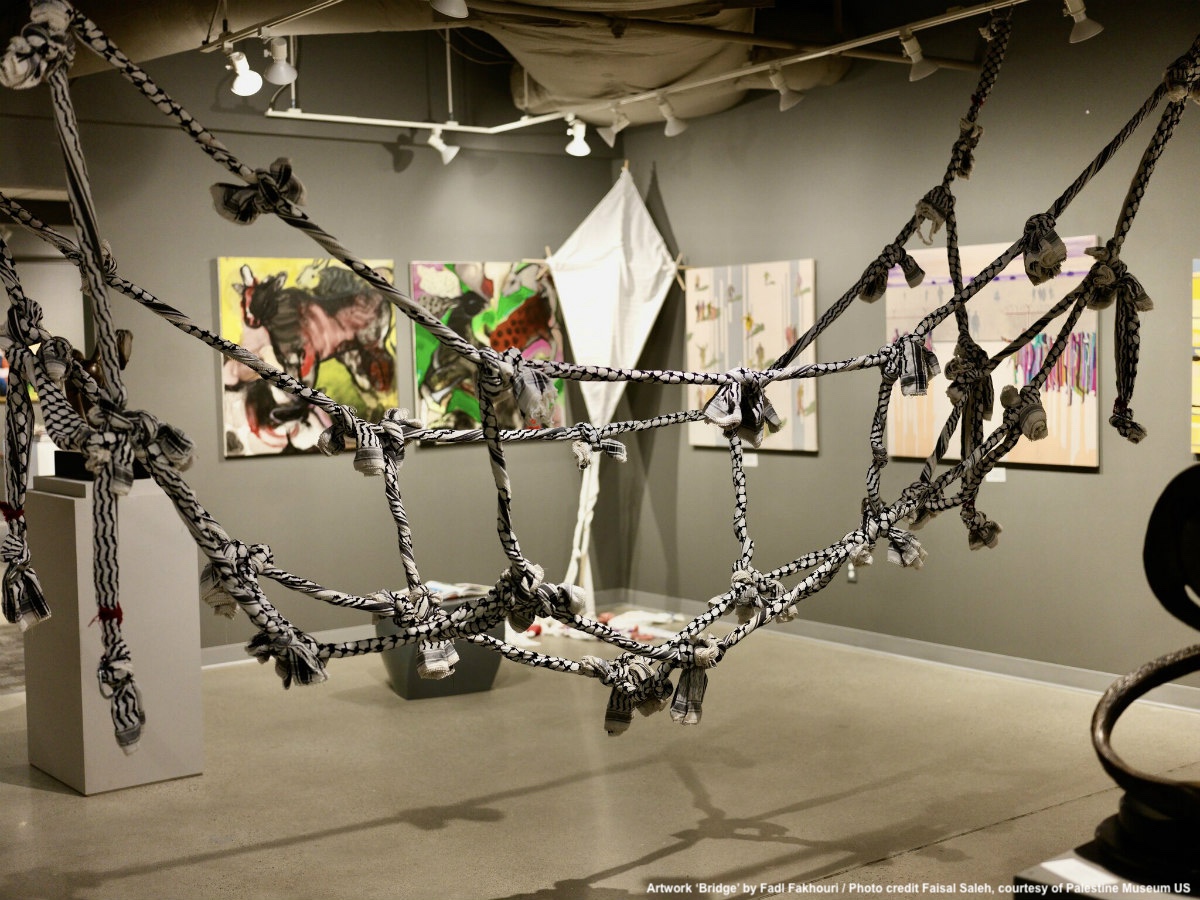Saints, queens, virgins, allegorical representations and fictional figures, these are the statues which tend to honor women in cities. Central Park in New York has got Alice in Wonderland. My hometown has got numerous sculptures representing maternity. And my city of residence praises a monumental, bronze sand-cast 19th-century statue, which is a female personification of the Bavarian homeland.
But we can’t only blame city planners and administrations for this overdue lack of recognition of real women in public space. Women’s achievements have been historically underrepresented and their stories have rarely been told. Those kinds of female statues in cities speak for themselves.
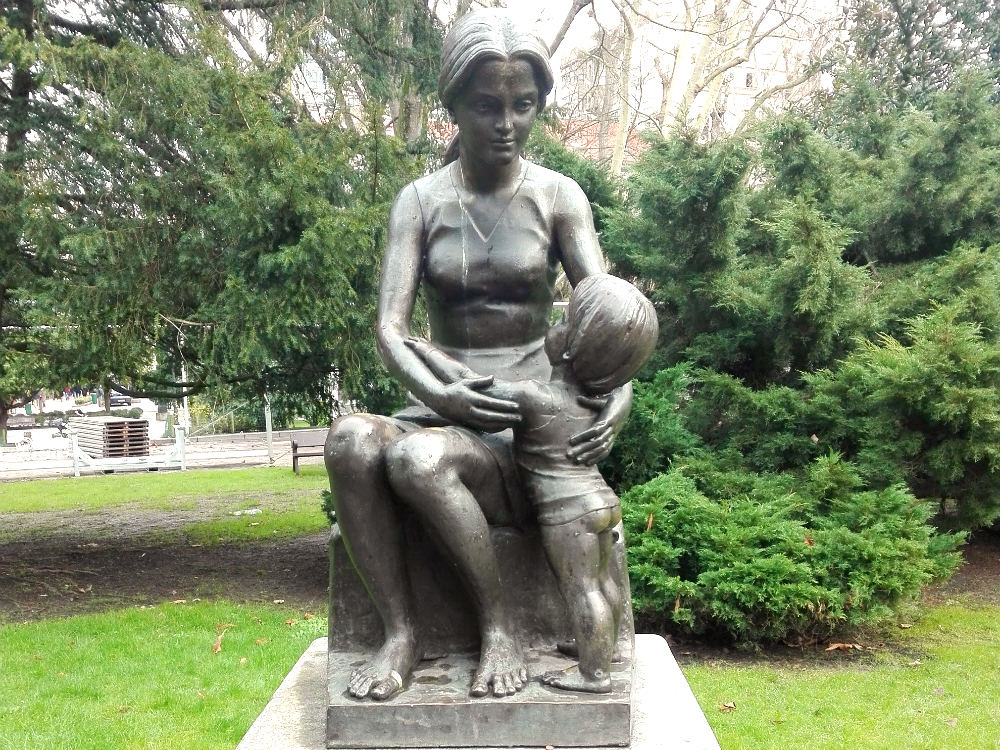
At the simple question ‘do you notice a single statute of women in the park?’ raised by two teenage girls from New York at visitors to Central Park, there were two reactions. ‘Oh get over it’ or ‘what, really?’. ‘It didn’t occur to people that this was even happening’, explains Brenda Berkman, one of the directors of the nonprofit Monumental Women organization. Maybe because people don’t even think of women in historical terms.
And yet Monumental Women has achieved the unthinkable. Thanks to their persistent advocating work visitors to Central Park can admire and learn about Women’s Rights Pioneers Sojourner Truth, Elizabeth Cady Stanton and Susan B. Anthony.
It was on Women’s Equality Day August 26th and on the 100th anniversary of the ratification of the 19th amendment and women winning the right to vote, when Monumental Women successfully planned to unveil this first statue of these three real women after 6 years of work. But this journey has not been a walk in the park. After tremendous resistance, tedious bureaucracy, lots of nos and ninety sculpture designs later, edited down to five, the final sculpture by artist Meredith Bergmann was picked. Then several authorities started a long approval process, which led to numerous changes to the original sculpture’s design. It was the consequence of a controversy on the women depiction, a debate winning traction as American cities started to come to terms with their colonialist and racist legacies of monuments in public spaces.
Monumental Women persisted in their endeavour, redesigned the monument and came up with three women pioneers, all contemporary, who have fought for human rights and women’s suffrage and represent the three elements of activism: speaking, organizing and writing.
Finally the Monument got the approval to be placed in Central Park, an essential location in the city taking into account that 40 million people visit the park every year. Moreover, Manhattan’s iconic Park certainly sends a strong message to other cities worldwide.
Up until recently, New York City had less than 3% of their public statues depicting females according to the Statues for Equality, a movement by the public artists and activists, Gillie and Marc to balance gender and racial representation in public statues. This statistic of women statues in cities is seen all across the Western world with Sydney and London following suit with 4% and 3% respectively.
Tapping the full potential of women’s history
Monumental Women’s mission is not stopping with this monument. They want to bring the great achievements of many women in history to public consciousness, especially to inspire young female citizens by educating them in untapped female history through an inclusive education campaign in partnerships with museums and libraries. And all of that while challenging U.S. municipalities to recognize and honor the contributions of all women of any color with tributes in their public spaces. The symbolic placement of women sculptures in cities is just the first step to achieve lasting and effective change in society.
The Talking Statues app allows visitors to the monument to listen to monologues of Sojourner Truth, Susan B. Anthony and Elizabeth Cady Stanton in English and Spanish-Language with the voices of award-winning actors, thus educating the public about their lives. The app also includes an interview with the sculptor Meredith Bergmann.
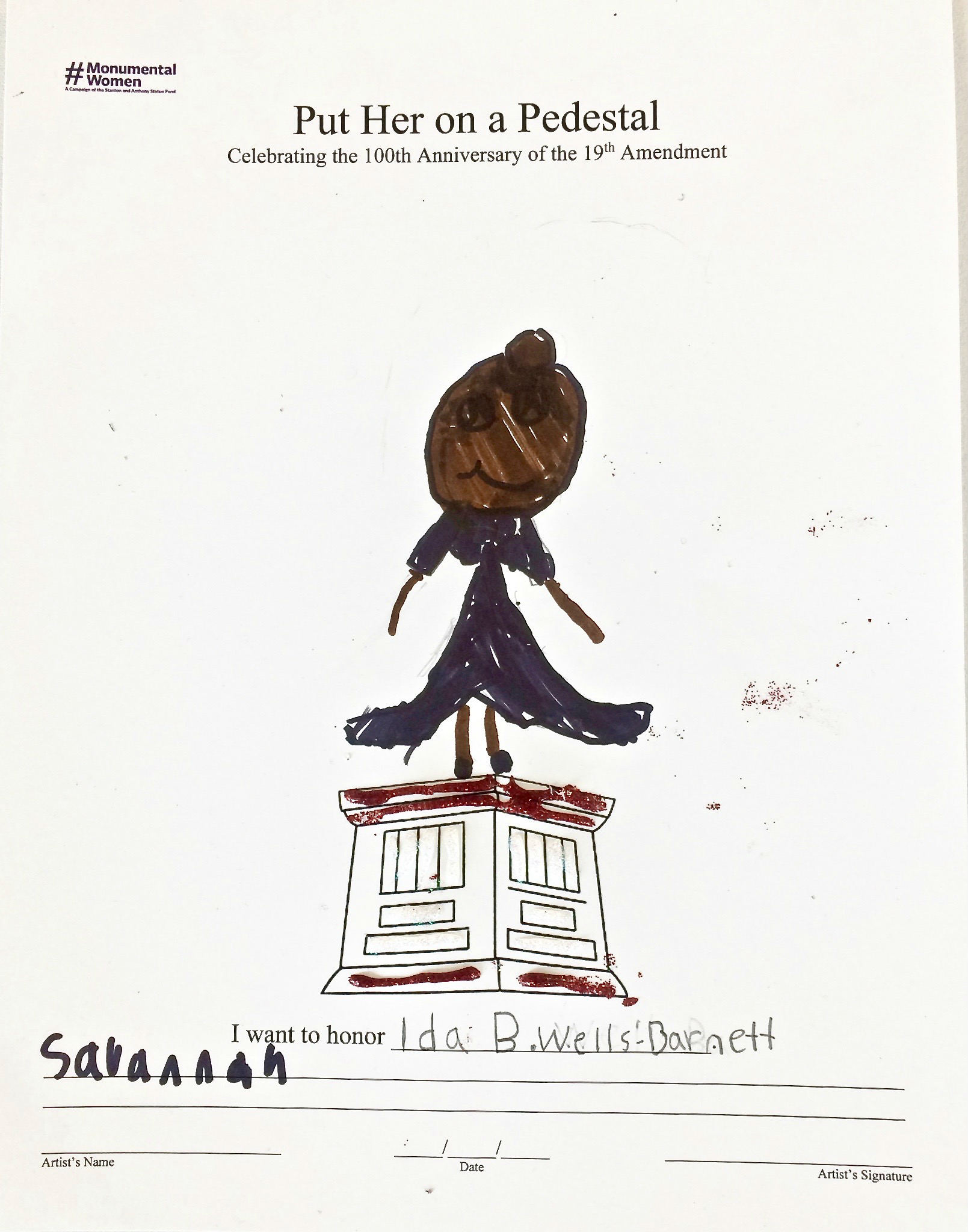
People need role models in science, in politics, in sports, and any other area, explains Berkman. I loved to read as a child but when I started reading history books, it was very discouraging to me to realize that women were almost invisible.
A passionate history and art reader, Berkman has a Juris Doctor Degree as well as a Masters Degree in History. She is an activist, artist, and a pioneering female firefighter in FDNY history. She has written history herself. Brenda began her career in the fire service after winning the federal sex discrimination lawsuit she initiated that resulted in the hiring of her and 40 other women as New York City’s first women firefighters in 1982.
Yet the number of female firefighters still remains very low. The national average is about 3.5 percent.
‘When we have more women in firefighters and police departments, companies and any other kind of organizations, then women’s voices have to be heard. For instance, it is not about that one female CEO in a company but by encouraging full participation of women of any colour and, most importantly, supporting them so that their voices are heard and they are comfortable being themselves. Everybody would benefit from that too because diversity enriches an organization’.
‘In the case of firefighters they say we are not changing anything just because women are now part of the department. But that is exactly the wrong approach. Of course, you have to change showers, medical attention, etc. ’, claims Berkman.
‘I hope people recognize that we have a serious gender discrimination issue embedded in our society as well as structural racism. Women of any colour still face many obstacles and experience trauma for the way they are treated because of their gender, being unable to achieve their full potential’, points out Berkman.
Women support women: Put her on a pedestal
Monumental Women is a predominantly women’s organization dedicated to other women’s achievements in history, a spirit which has been recently resonating on women to support other women. ‘We owe it to younger generations so that they build up self-esteem to accomplish their dreams’, explains Berkman.
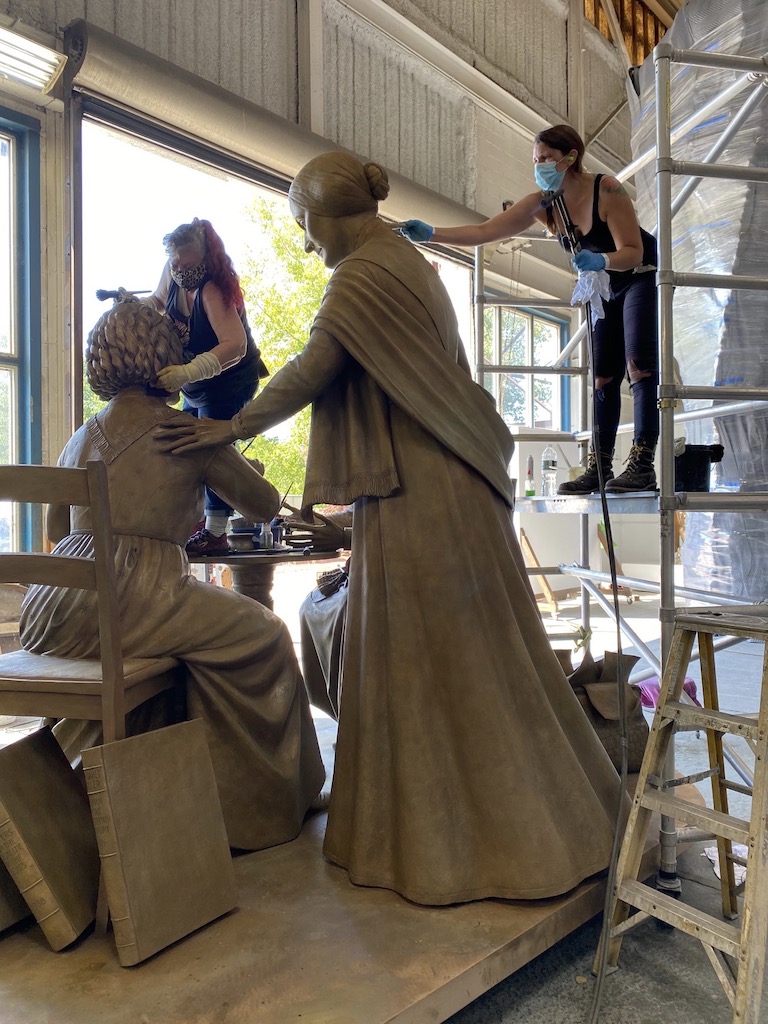
But we also owe it to our female ancestors through history and to empowered women today, who started the fight for equal opportunity for women many years ago, like Berkman in firefighter departments, and other women in communities, in neighbourhoods, in cities.
We have to build upon the past achievements, despite the mistakes made and the missteps in life of those women, says Marta Más founder of Comissió de Memòria i Gènere de Barcelona, one of the first organizations advocating for the recovery of the collective memory concerning women in Barcelona.
Feminism is on the rise in cities and Studies on Gender Equality are booming at universities. But we can’t forget that this is all thanks to millions of women fighting for our rights from the base before us. Millions of stories never told. Younger women generations can follow in their steps, build upon their achievements and expand on causes, like making gender equality inclusive. Toni Morrison once wrote: ‘Women’s rights is not only an abstraction, a cause; it is also a personal affair. It is not only about “us”; it is also about me and you. Just the two of us’.
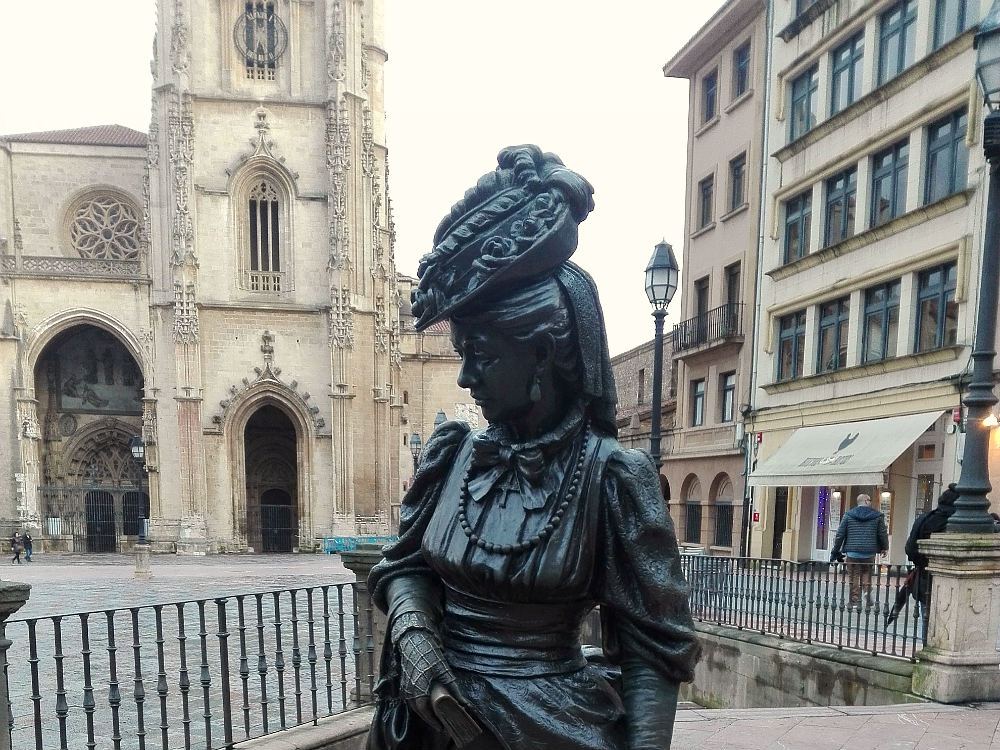
The Covid-19 pandemic is an unbelievable challenging time for women. We need inspiration for empowerment and real women statues in cities are an overdue female recognition to swift the narrative, as girls who walk by will see themselves represented. As Monumental Women President Pam Elam said: “We are here to move history forward and not even a pandemic will stop us.” This challenging ceremony in time of the pandemic will hopefully also be remembered in history books.
Billie Jean King, an American former world number one professional tennis player and social activist, is an inspiration for Berkman. In Billie Jean King’s words “YOU HAVE TO SEE IT TO BE IT.” This is what Monumental Women is all about.
